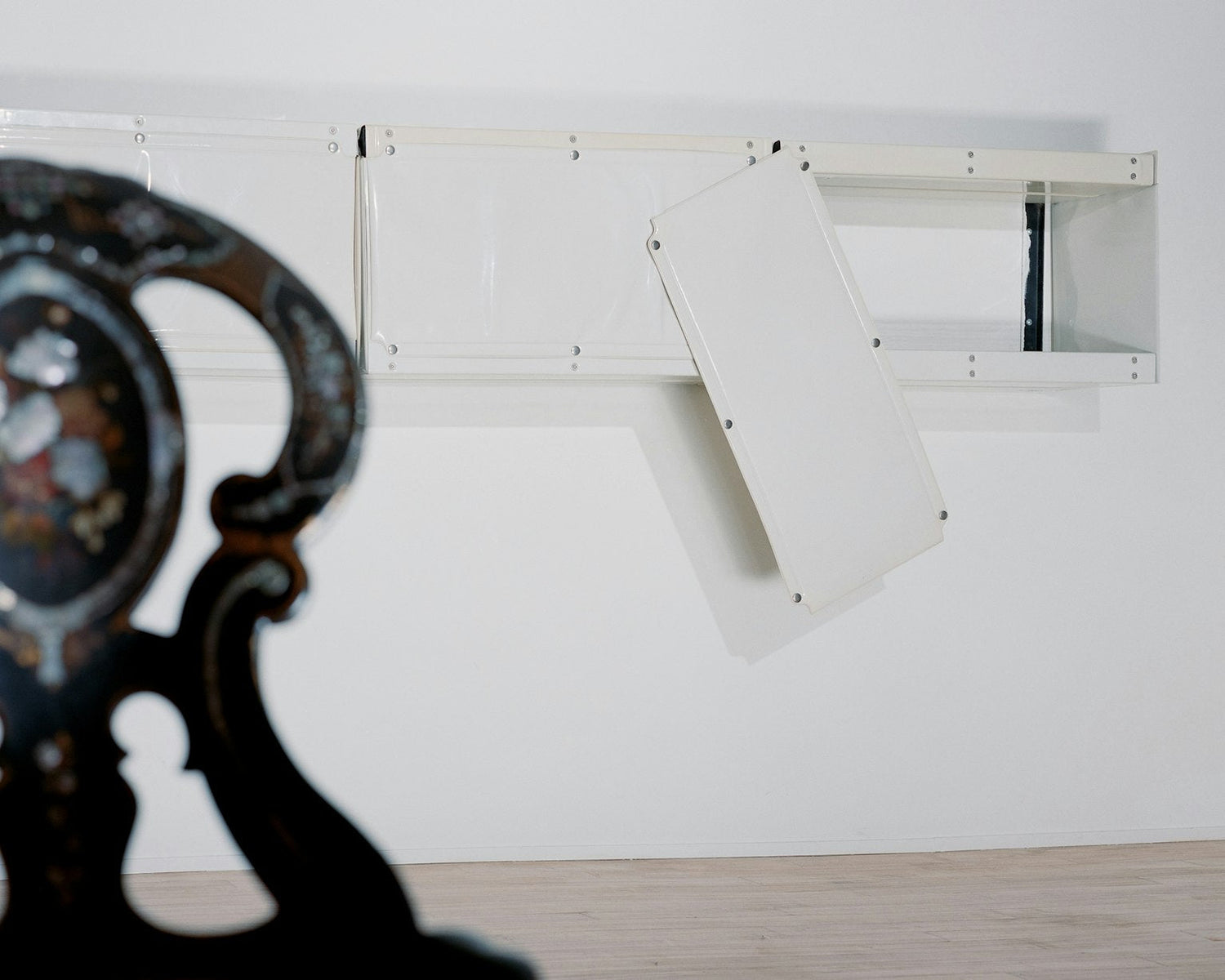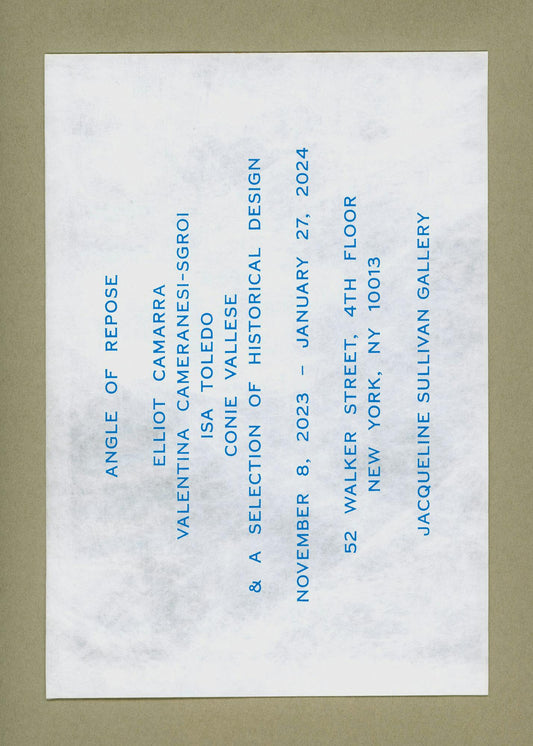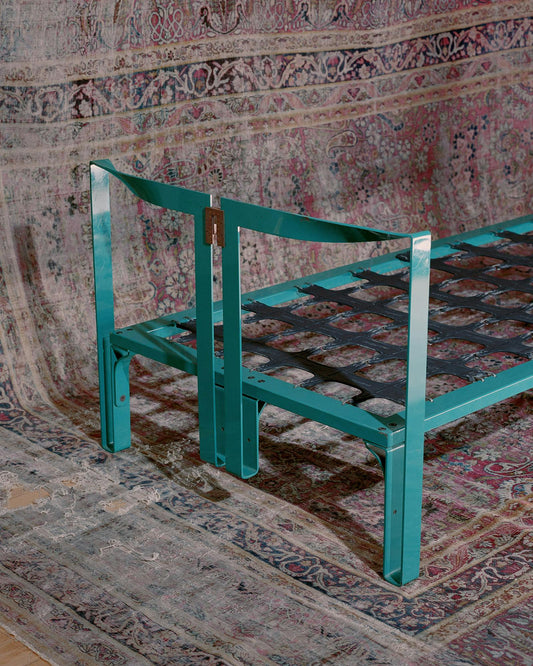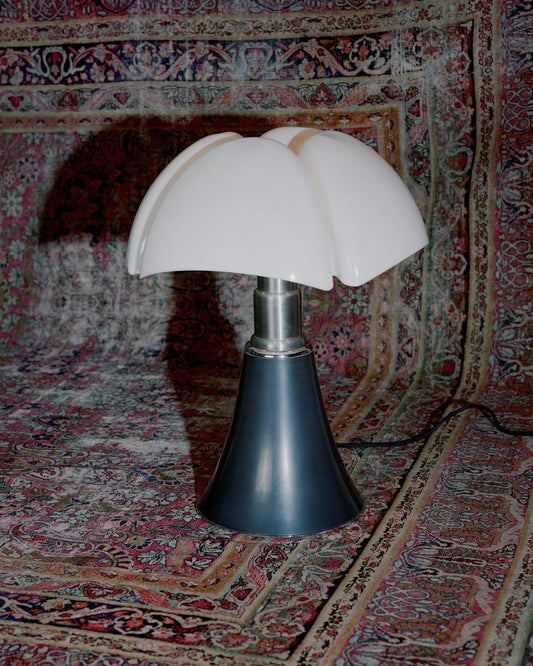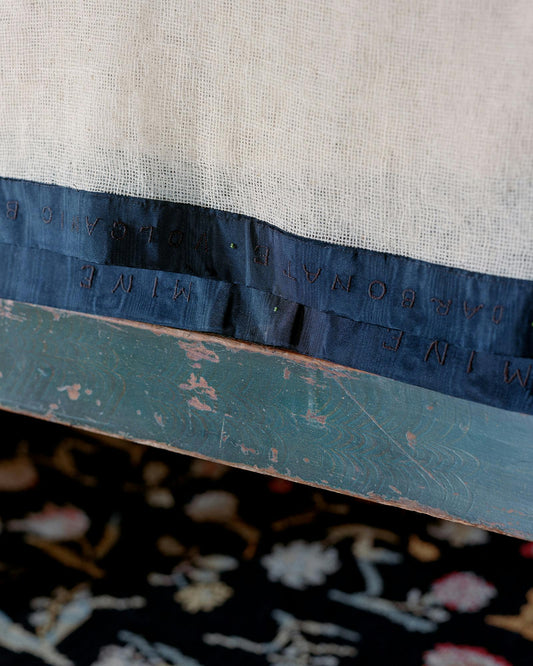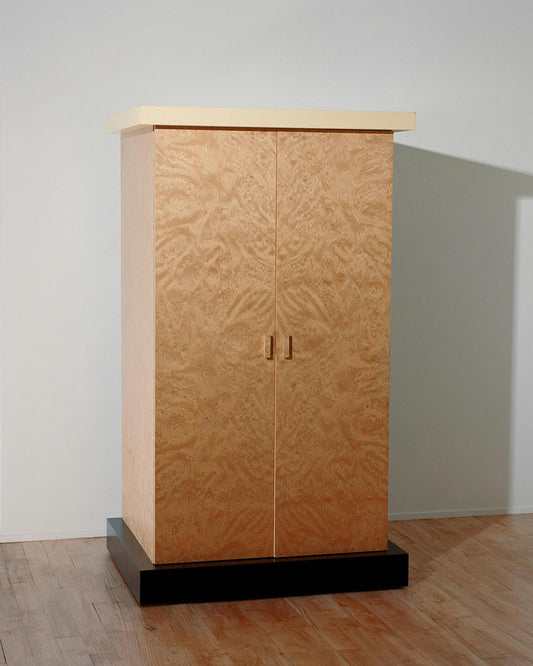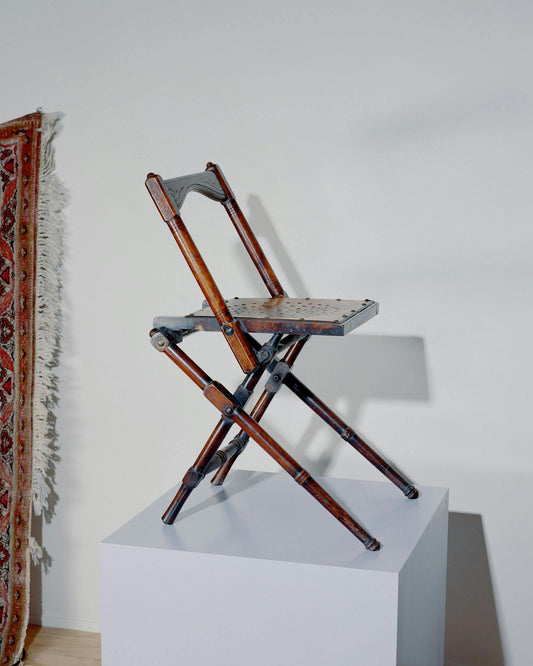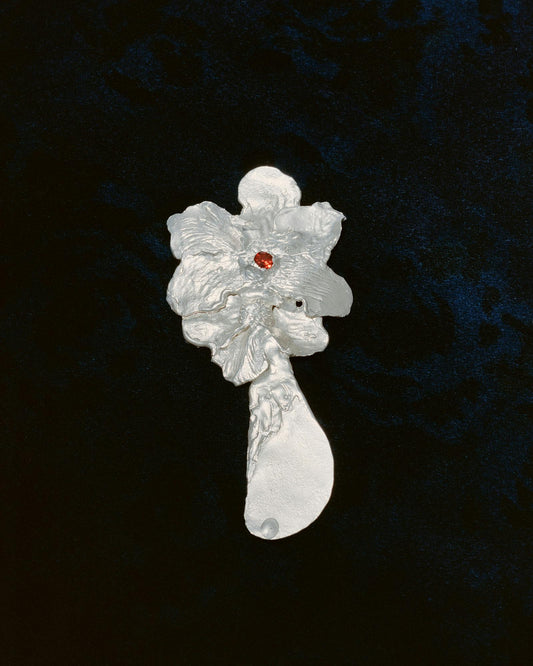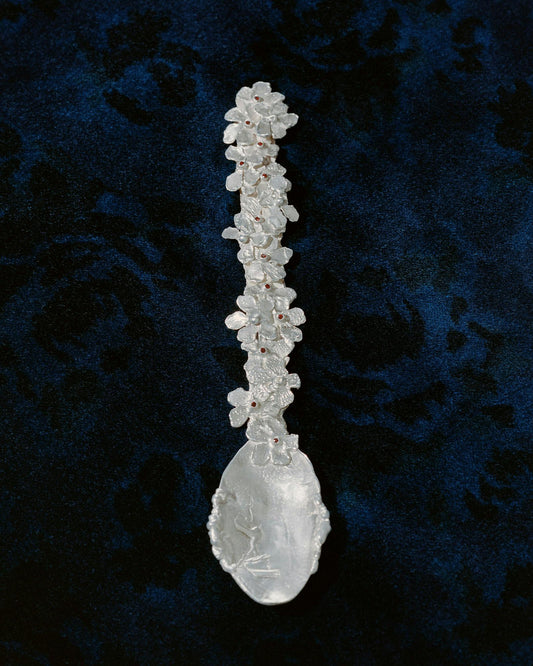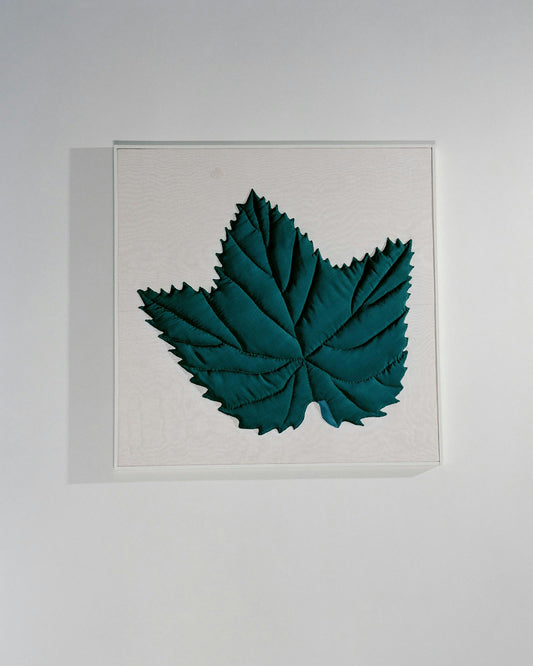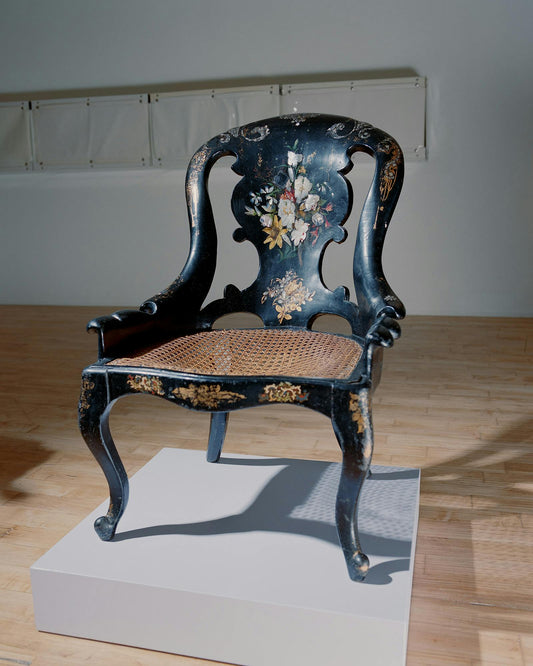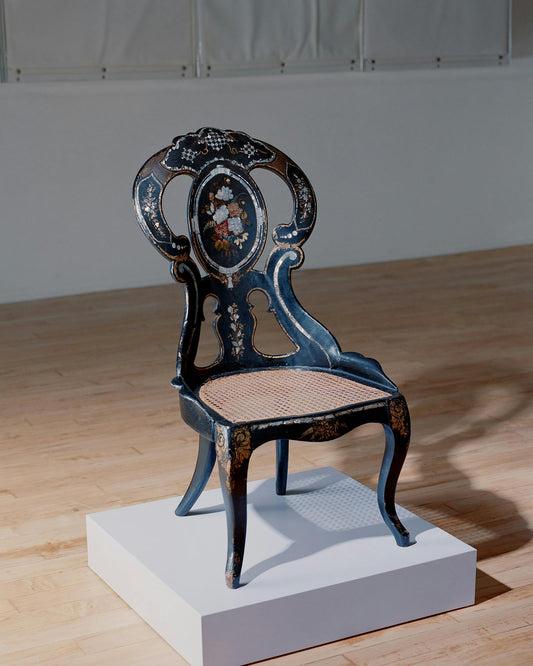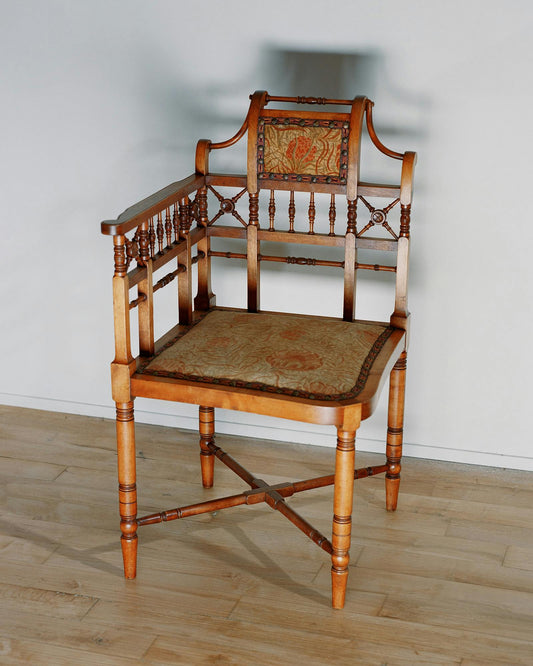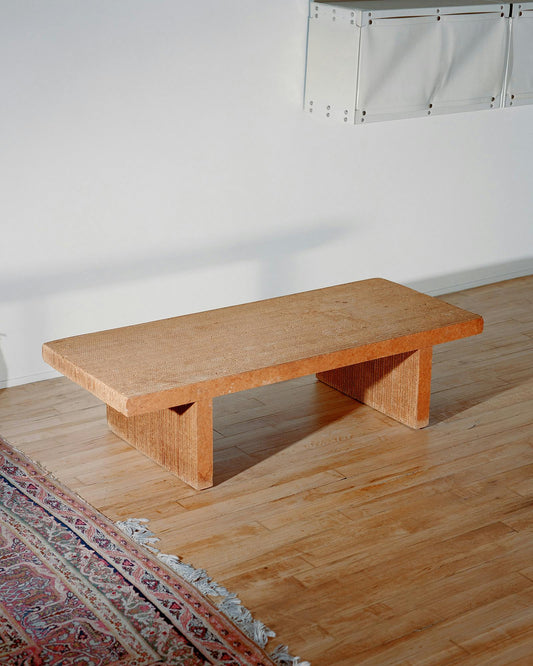Angle Of Repose
Angle of Repose is inspired by Wallace Stegner’s 1971 novel by the same name (Pulitzer Prize for Fiction, 1972). The novel recounts the history of four generations of an American family, beginning in the 1860s, during a period of great Western expansion. Through tracing the complex and incongruous experience of a family in search of a “home” that eludes them, the story inspires questions about the inherent discord between ideas surrounding the interior and frontier, rugged exteriority and domestic intimacy, and the way in which this dissonance can make way for a rich fabric of human experience. Another catalyst for the exhibition is the term’s scientific implications, found in engineering principles. Employed with regards to agricultural grain production and storage, it is defined as the steepest angle of descent at which a material can be piled before it loses its form and slumps to lose its shape. For example, if one were to pour a steady stream of sand on the beach, it will pile until there is a moment of final release, of resignation, of repose. Within this principle, there is ample opportunity to explore ideas of inherent friction – particles in conversation, dialogue and even perhaps disagreement, to the point of surrender.
